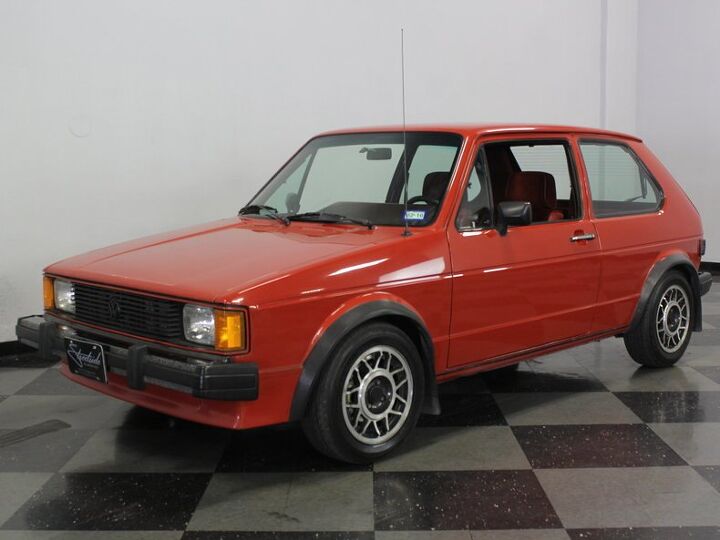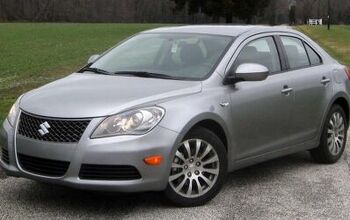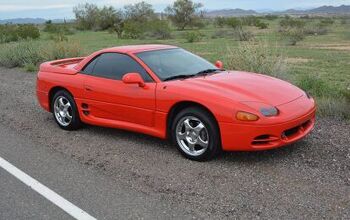QOTD: What's Your Favorite Automotive Success Story?

Earlier this week, our Matthew Guy inquired about your favorite automotive “ oops” moment — a time when it all went wrong for a manufacturer’s model or idea. Today, we’re going to flip it around, switch it up, and reverse it.
There are times when everything comes together at the right place and time in the automotive world. Whether by complete accident or cunning planning (often years in advance), a manufacturer hits an idea out of the park. It might be a single model in a new style, a superb entry into a crowded marketplace, or something that fills a void hitherto left empty in the lives of hungry consumers. No case of schadenfreude here — just success, dollars, happy children, puppies, and smiling regulators and accountants.
So which tale of automotive success is your favorite? While the GTI shown above is interesting and is credited with creating the new hot hatch segment, it’s not my pick today.
This is. When Toyota’s luxury brand came to market for model year 1990, the brand had only two models: the Lexus ES250, which was a lightly modified Camry, and the Lexus LS400, an all new luxury sedan. The success of the brand was no happy accident; Toyota had begun LS development all the way back in 1983. Chairman Eiji Toyoda challenged his company to build the world’s best car, and the F1 project (“Flagship One”) began. F1 development was spurred on by the debut of Acura in 1986, and the announcement of Infiniti in 1987.
Toyota implemented exhaustive research and development, spent millions of dollars, and even sent designers to Laguna Beach, California, to study the taste and lifestyle of upper class Americans. And it paid off in spades.
In the last four months of 1989, when the Lexus brand first went on sale, it racked up 16,392 sales, exceeding the 16,000 goal set by Lexus internally. The first full year of sales in 1990 found 63,594 Lexus vehicles in American driveways, and Lexus held the sales trophy for premium imported cars in the United States by the end of 1991. The same year, J.D. Power ranked the marque highest for initial vehicle quality, customer satisfaction, and sales satisfaction.
Lexus later released the RX300, effectively beginning the crossover SUV segment we all love and cherish talk about today. But I’ll stop myself now, so you can share your favorite success story.
[Detail from Wikipedia]

Interested in lots of cars and their various historical contexts. Started writing articles for TTAC in late 2016, when my first posts were QOTDs. From there I started a few new series like Rare Rides, Buy/Drive/Burn, Abandoned History, and most recently Rare Rides Icons. Operating from a home base in Cincinnati, Ohio, a relative auto journalist dead zone. Many of my articles are prompted by something I'll see on social media that sparks my interest and causes me to research. Finding articles and information from the early days of the internet and beyond that covers the little details lost to time: trim packages, color and wheel choices, interior fabrics. Beyond those, I'm fascinated by automotive industry experiments, both failures and successes. Lately I've taken an interest in AI, and generating "what if" type images for car models long dead. Reincarnating a modern Toyota Paseo, Lincoln Mark IX, or Isuzu Trooper through a text prompt is fun. Fun to post them on Twitter too, and watch people overreact. To that end, the social media I use most is Twitter, @CoreyLewis86. I also contribute pieces for Forbes Wheels and Forbes Home.
More by Corey Lewis
Latest Car Reviews
Read moreLatest Product Reviews
Read moreRecent Comments
- Master Baiter Mass adoption of EVs will require:[list=1][*]400 miles of legitimate range at 80 MPH at 100°F with the AC on, or at -10°F with the cabin heated to 72°F. [/*][*]Wide availability of 500+ kW fast chargers that are working and available even on busy holidays, along interstates where people drive on road trips. [/*][*]Wide availability of level 2 chargers at apartments and on-street in urban settings where people park on the street. [/*][*]Comparable purchase price to ICE vehicle. [/*][/list=1]
- Master Baiter Another bro-dozer soon to be terrorizing suburban streets near you...
- Wolfwagen NO. Im not looking to own an EV until:1. Charge times from 25% - 100% are equal to what it takes to fill up an ICE vehicle and 2. until the USA proves we have enough power supply so as not to risk the entire grid going down when millions of people come home from work and plug their vehicles in the middle of a heat wave with feel-like temps over 100.
- Kwik_Shift_Pro4X Where's the mpg?
- Grg These days, it is not only EVs that could be more affordable. All cars are becoming less affordable.When you look at the complexity of ICE cars vs EVs, you cannot help. but wonder if affordability will flip to EVs?




































Comments
Join the conversation
First year of NSX and S2000. Both lost some shine when the competition responded and HMC did not, but in the first year there was nothing like either. A80 Supra Turbo. At the time I thought it was overpriced... Oops.
How about Harlow Curtice and the 1934 Buicks? Without the Series 40, would there be a Church of the 3800?